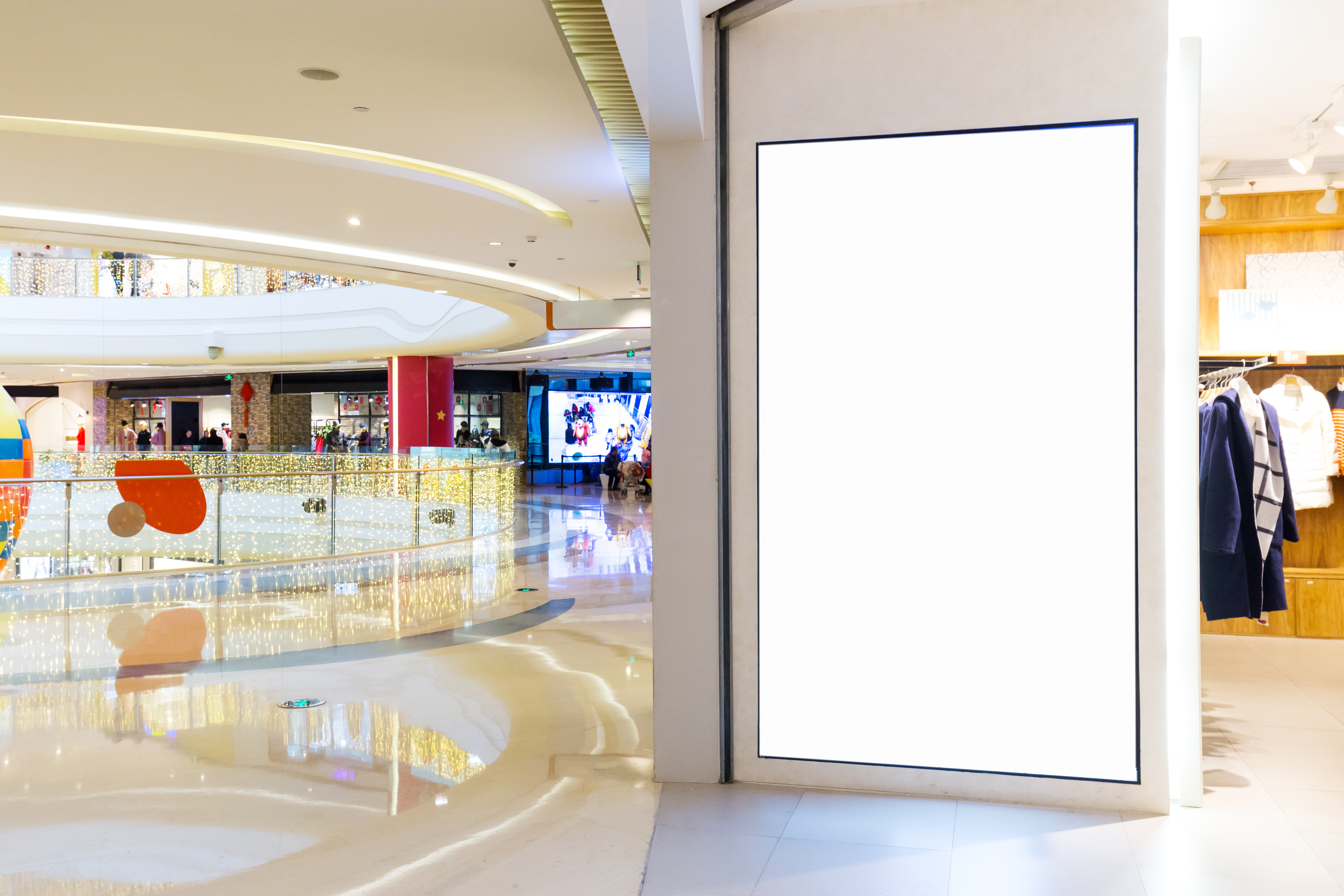As retailers prepare to reopen their doors, there are immediate needs to be addressed: Compliance with local restrictions, realigning resources, and, most importantly, ensuring employees and customers both feel and are as safe as possible.
While entirely necessary, these are short-term solutions for our current problem. But there is every reason to believe that the coronavirus pandemic has merely accelerated the changes already coming to retail, namely an omnichannel shift that deprioritizes in-store shopping. So, while we can talk forever about today and tomorrow and the weeks to come, we thought it would be prudent to outline the longer-term retail changes this pandemic will bring, and the ways retailers are already starting to address them.
So, first, we are going to take a quick look at TrendSource’s most recent retail market research survey, which suggests some lasting effects this pandemic will have on the retail landscape. We will then examine how three different retailers (Best Buy, Nordstrom, and The GAP) are addressing the short and long term ramifications and then, unfortunately, we will end on a sad note as we once again must address issues of in-store violence.
TrendSource Retail Market Research: Consumers Increasingly Believe they Will Never Return to Previous Retail Patterns
TrendSource has tracked notable changes in people’s current and expected retail shopping behavior. During the last weeks of March and Aprill, TrendSource ran the same retail market research survey, asking respondents about shifts in their in-store and online shopping habits, and also when they planned to return to their pre-coronavirus patterns.
Two changes over time warrant further discussion and investigation. First, during the last week of March, only 17.2% of respondents reported increasing their online retail shopping. Today, that number is up 32.1%. Indeed, 49.9% of respondents now report increasing their use of digital shopping platforms.
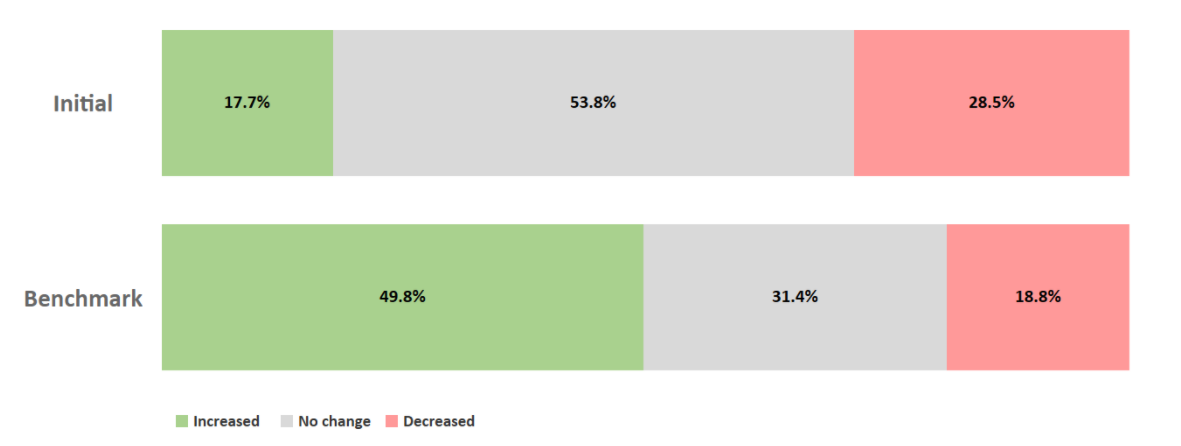
This, of course, makes sense. Brick & mortar has been closed, people still need the goods retailers sell, and online is the only available path to purchase.
More notable, however, is the increasing number of respondents claiming they will never return to their previous shopping patterns. In the initial survey, only 2.2% claimed the shifts in their shopping patterns will remain permanently, even after the virus is eradicated. Today that number is at 10.9%, a substantial 8.7% increase, and a trend we also have seen in our recent food service industry market research.
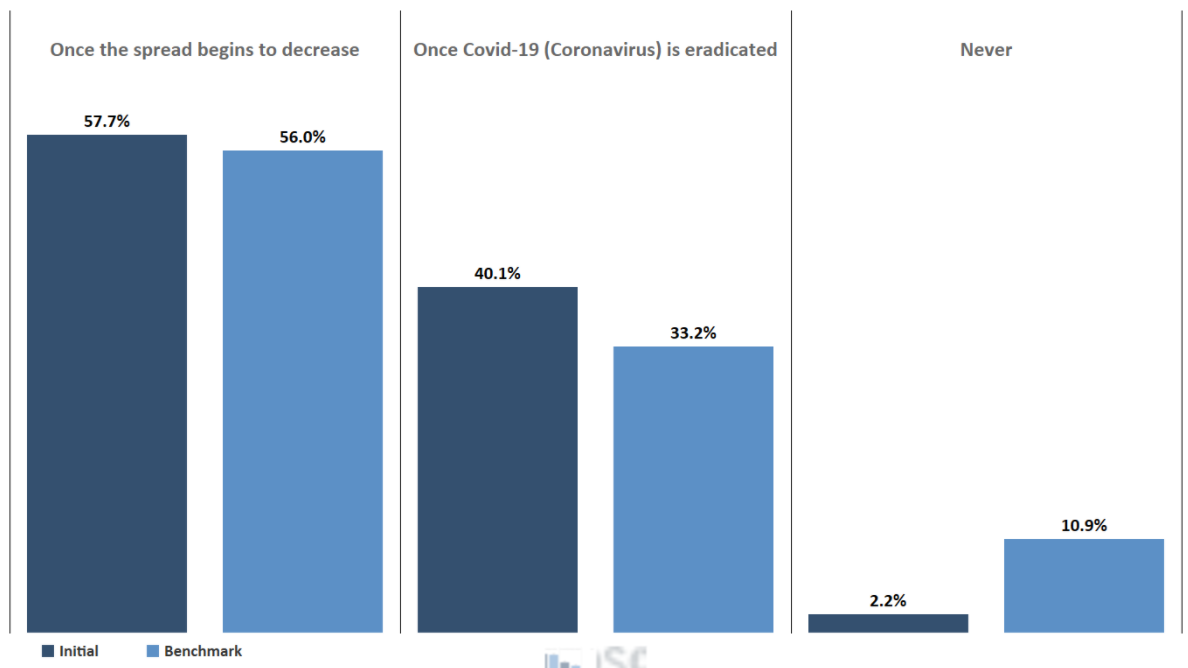
Notice that the percentage of respondents waiting until the threat decreases stayed relatively static over this period. This means that the “never” camp increase has come from those who had previously intended to wait until the virus was entirely eradicated. Portions of the more cautious/less optimistic group of respondents have increased these sentiments, while those who are most hot-to-trot are still ready to go so long as the threat is decreased.
So, what does this all mean? Well, consumers are likely to feel out the new normal and acclimate themselves to it--these intentions, as with any survey, are not set in stone. Nonetheless, as reopenings begin and retailers consider how to reshape their in-store and omnichannel operations, it isn’t just about the short-term need to make customers feel safe returning to stores; it’s also about the long term need to accelerate into omnichannel by finding new differentiators, touchpoints, and efficiencies for this forever-shifting landscape.
Those respondents indicating they would never return to retail as usual are perhaps on to something we all already kinda know: Things will never go back to the way they were before.
With that in mind, let’s take a look at how three different retailers--Best Buy, Nordstrom, and GAP--are managing their reopenings. What expectations are they setting, what measures are they putting into place, and, most importantly, what are their plans for the omnichannel era that, thanks to coronavirus, is arriving ahead-of-schedule?
Best Buy By Appointment Only: Where Omnichannel Comes with a Personal Shopper
As was recently announced, Best Buy will be reopening stores in select areas but will only admit customers with pre-scheduled appointments.
Here’s how it works: Customers schedule appointments at their local Best Buy through an online portal. A team member calls them to confirm the appointment and provide a remote consultation, figuring out what the customer is looking for and understanding their questions and concerns. The customer then arrives at the store at the appointed time, is greeted at the door (and offered a facemask) and led through the store by a personal shopping associate already familiar with their needs.
This system will prevent lingering and browsing, cutting down on impulse purchases, no doubt, but also helping Best Buy to ensure social distancing guidelines are met. It’s like the opposite of show-rooming, and while this seems like an ideal system for retailers, Best Buy is uniquely positioned to offer it.
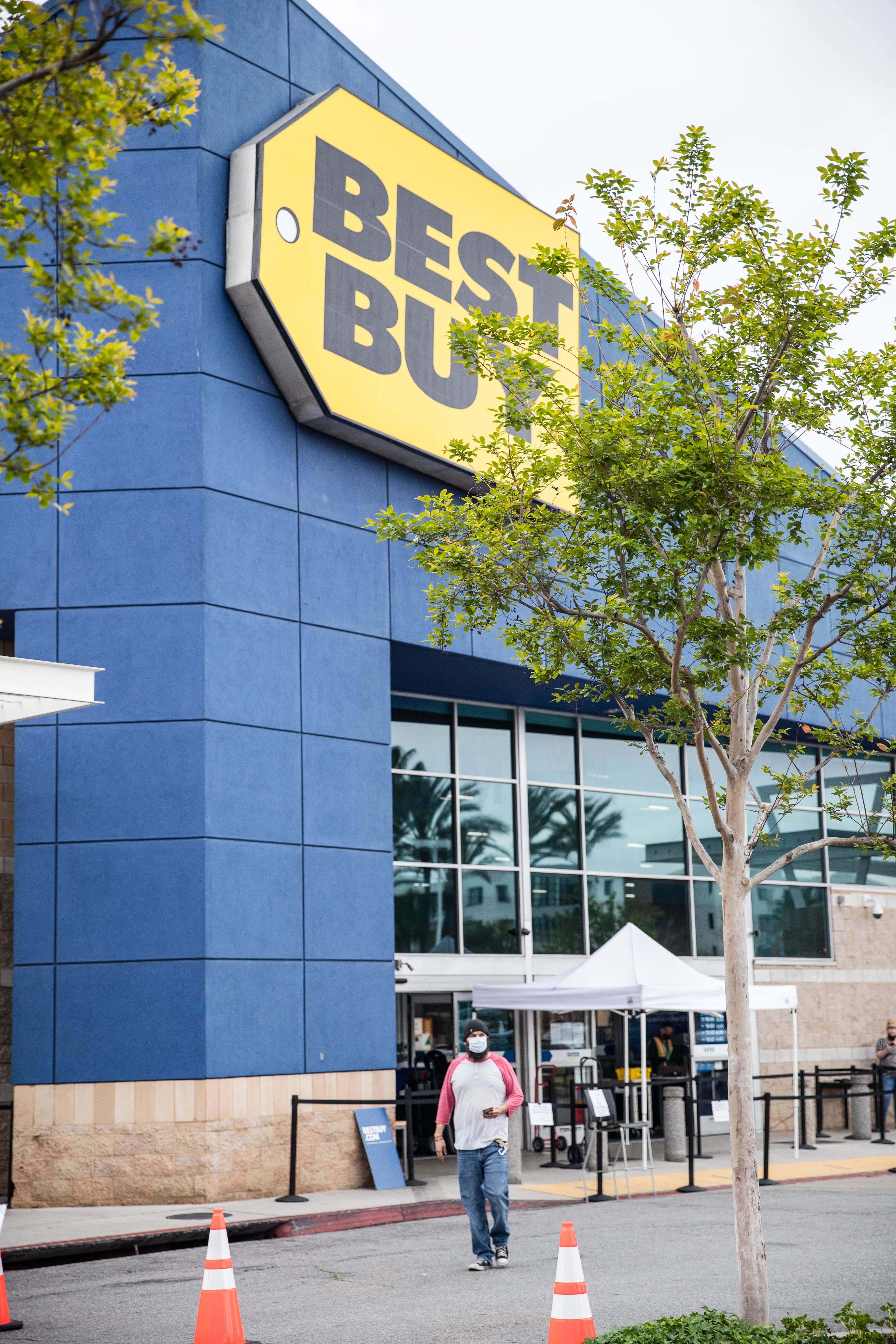
First, more so than any other good, perhaps, consumer electronics are booming right now (seriously, Nintendo Switches are going for $500 right now!). As people have built and rebuilt home offices, as they have doubled down on at-home entertainment, and as they have found new ways to virtually connect, their electronics wishlist no doubt is growing.
Many families have no doubt discovered, for example, that one TV is simply not enough during a quarantine--adults can only be asked to sit through Frozen 2 so many times, right?
Sure, gaming systems, office electronics, and other devices can be purchased online, but many consumers are still weary of purchasing high-cost, low-durability items without inspecting them and collecting them in person. This brings us to another point, one that explains how Best Buy is uniquely able to offer this personal shopping service while places like a fabric or stationary store cannot: With much of their stock qualifying as big-ticket items, Best Buy is more prepared to absorb the costs of 1:1 personal shopping.
This is, of course, a temporary measure designed to get stores operating safely as soon as possible, but it also gives some glimpses of how future omnichannel retail operations will function. As Walmart’s CEO Doug McMilllon told Business Insider recently, this pandemic is “just speeding up the significant change the retail industry was already undergoing."
Nordstrom Finding New Omnichannel Differentiators
Nordstrom will also be leaning into omnichannel and online, and, like Best Buy, their transition will likely be easier than most. Yes, this requires casting off some brick & mortar weight, with the retailer announcing plans to close 16 stores, but this falls in line with a broader strategy to get more nimble.
According to the retailer, one-third of their sales already come from digital channels, and many of their customers have already learned how to order online for curbside pickup. Nordstrom will be expanding this service, encouraging a similar “only come to the store when you are ready to buy” type of behavior. The days of browsing and trying on an entire rack of sweater vests until you find the right one (there’s never a right one!) may not be behind us entirely, but they are definitely paused.
Instead, Nordstrom would rather consumers browse online and come into the store with a set idea of what they want, maybe try on two different sizes, pay without using cash, and get out the door. Nordstrom will be closing some of its fitting rooms to ensure customers are six-feet apart from one another as they get down to their birthday suit to try on a new pantsuit. Any fitting room go-backs will be quarantined for at least 24 hours to reduce the chance it spreads the coronavirus.
More interestingly, they are necessarily pulling back on many of the customer service extras that gave them their brand identity--free tailoring, in-store makeup tutorials, and bra fittings will all be indefinitely paused (though beauty consultations will be offered online). These are the types of services that Nordstrom loyalists loved and have come to expect. Nordstrom is no doubt cooking up new differentiators for a truly omnichannel era, ensuring a standard of service across touchpoints while finding “extras” they can throw in beyond free shipping or curbside pickup.
For retailers, this is the name of the game right now--finding omnichannel ways to make a brand stand out as in-store ventures become a fraught secondary touchpoint. It is especially frustrating, no doubt, for retailers like Macy’s that were going all-in on in-store experience, trying to lure millennials into stores with the very types of services and technologies coronavirus has curtailed. But these are the times we are living in.
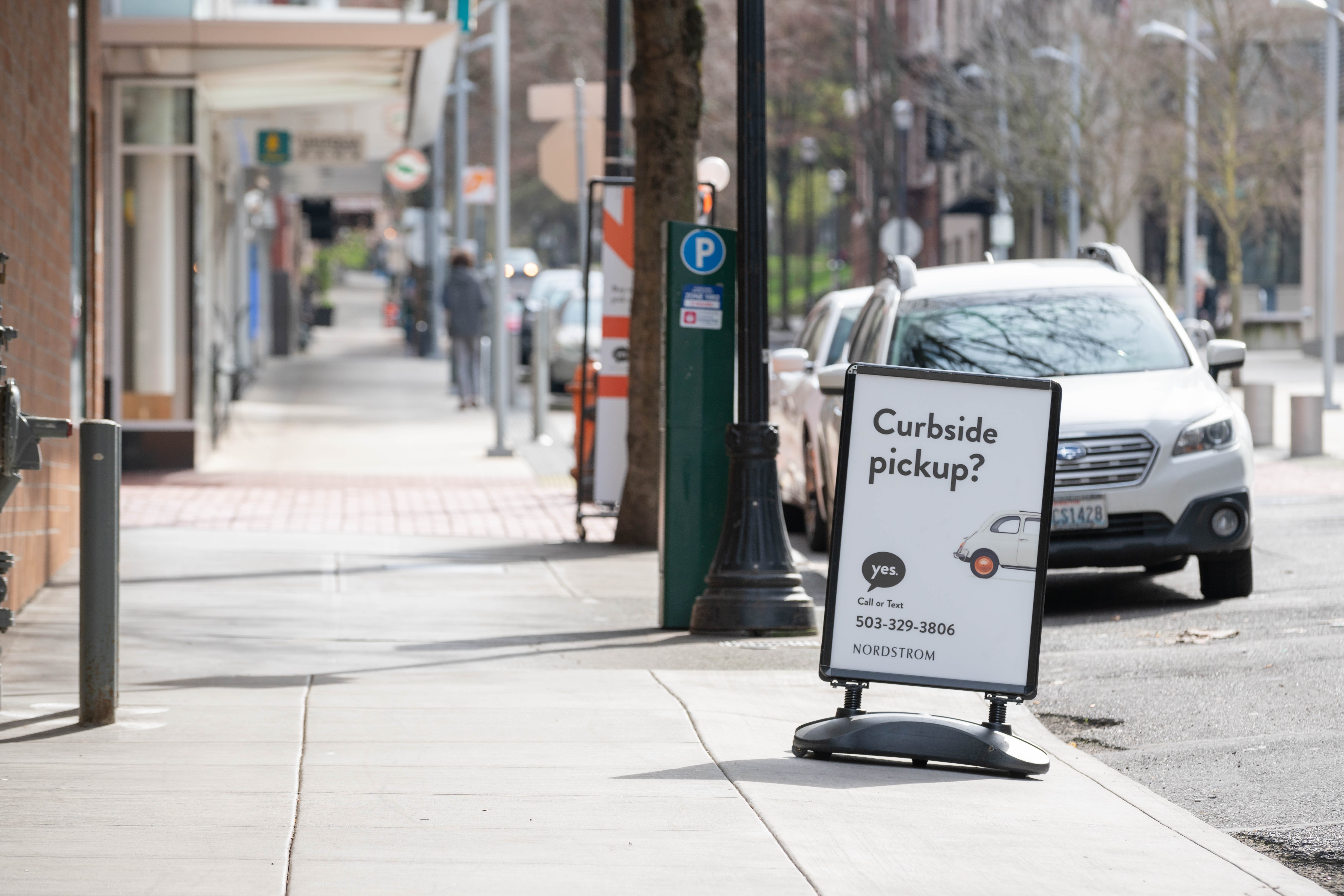
Filling in the GAPs with Omnichannel Additions
As an anchor in many malls, Nordstrom offers its own dedicated entrances from parking lots into their stores, meaning consumers need not brave the full mall experience in order to visit. This represents a challenge for retailers inside indoor malls, which many customers will likely see as an obstacle course of risks, too dangerous to traverse. Furthermore, curbside pickup becomes a much trickier enterprise under such conditions.
This is why GAP has announced they will not be reopening such stores, instead focusing on their strip mall locations and others that have a dedicated entrance for consumers. When communicating their reopening plans, the company noted that only 20% of its revenue comes from stores inside indoor shopping malls.
They hope their online and omnichannel operations, plus their aspiration to be “the gold standard when it comes to safe retail” will help them bounce back as they open 800 stores by the end of the month.
“We feel confident that our online composition and street, strip, outlet and lifestyle [outdoor] malls give us an advantage,” GAP’s CEO said. “That is exciting for us.”
The Problems Retail Market Research Cannot Solve
In addition to these risks and concerns, there is the mounting threat of violence and even murder. Yes, you read that correctly, this is now where we are as a society: People are assaulting and killing retail workers imposing distancing and PPE guidelines.
Unfortunately, there are some problems retail market research simply cannot solve, and this is one of them. It is agonizing to discuss such abominations, and even harder when we begin to recognize this is becoming a pattern. Front-line retail workers have become targets for small-minded people who see them as a representation of the freedoms they have lost to the pandemic. They are taking out their aggression against a virus and their government’s response to it on people risking their lives to provide consumers some sense of continuity.
Again, I just cannot summon anything but contempt and disgust when discussing this topic, and if this were not a family blog there would be a long chain of four-letter words.
But while it is galling for me, it is no doubt terrifying for employees.
So while we all plan our return to retail, and as TrendSource helps retailers plan for this return, we should all keep employees at the front of our minds. And in our hearts.
